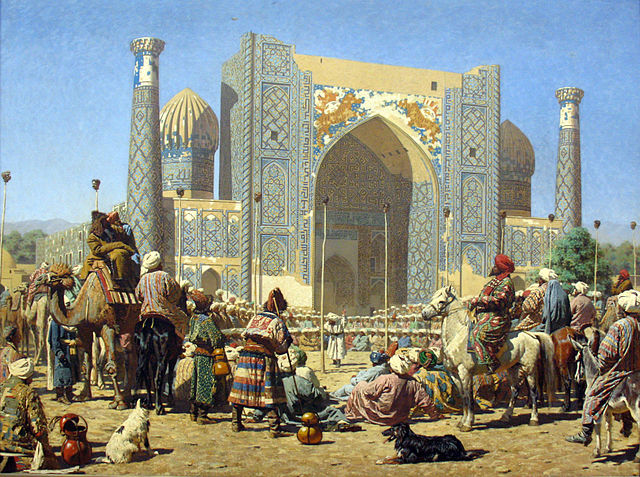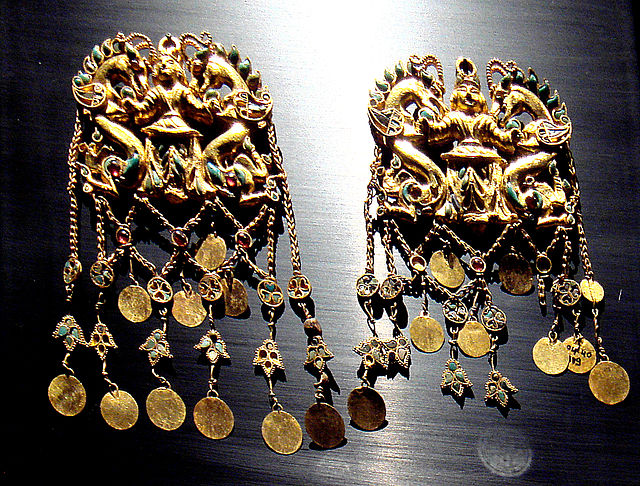Uzbekistan is a landlocked country in Central Asia. It is itself surrounded by five landlocked countries: Kazakhstan to the north; Kyrgyzstan to the northeast; Tajikistan to the southeast; Afghanistan to the south, Turkmenistan to the south-west. Its capital and largest city is Tashkent. Uzbekistan is part of the Turkic languages world, as well as a member of the Organization of Turkic States. While the Uzbek language is the majority spoken language in Uzbekistan, Russian is widely used as an inter-ethnic tongue and in government. Islam is the majority religion in Uzbekistan, most Uzbeks being non-denominational Muslims. In ancient times it largely overlapped with the region known as Sogdia, and also with Bactria.
Triumphant crowd at Registan, Sher-Dor Madrasah. The Emir of Bukhara viewing the severed heads of Russian soldiers on poles. Painting by Vasily Vereshchagin (1872).
The Silk Road extending from Southern Europe through Africa and Western Asia, to Central Asia, and eventually South Asia, until it reaches China, East Asia proper, and Southeast Asia
ossuary, statue of a man, Koy-Krylgan-Kala region, first centuries BC, Khorezm
Chorasmian fresco from Kazakly-Yatkan (fortress of Akcha-Khan Kala), 1st century BC-2nd century AD
Bactria, or Bactriana, was an ancient Iranian civilization in Central Asia based in the area south of the Oxus River and north of the mountains of the Hindu Kush, an area within the north of modern Afghanistan. Bactria was strategically located south of Sogdia and the western part of the Pamir Mountains. The extensive mountain ranges acted as protective "walls" on three sides, with the Pamir on the north and the Hindu Kush on south forming a junction with the Karakoram range towards the east.
Xerxes I tomb, Bactrian soldier c. 470 BC.
Pre-Seleucid Athenian owl imitation from Bactria, possibly from the time of Sophytes.
Gold stater of the Greco-Bactrian king Eucratides
The treasure of the royal burial Tillia tepe is attributed to 1st century BC Sakas in Bactria.








